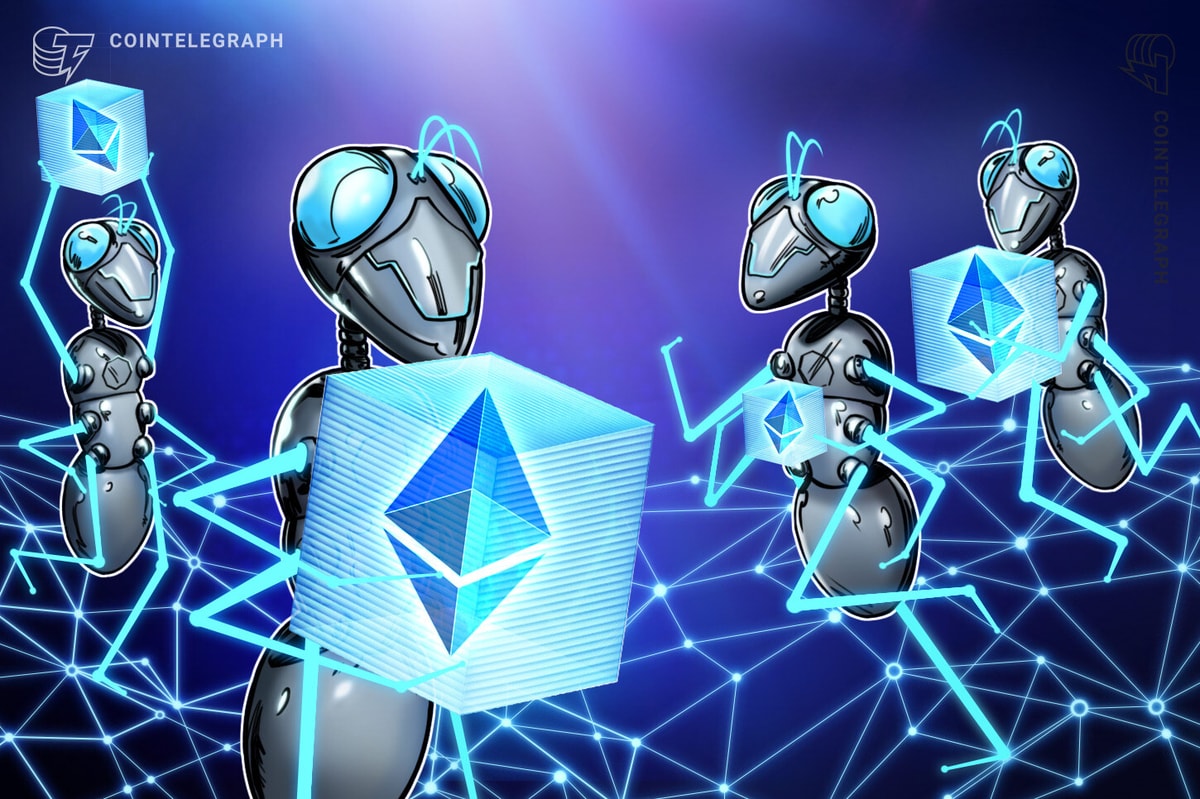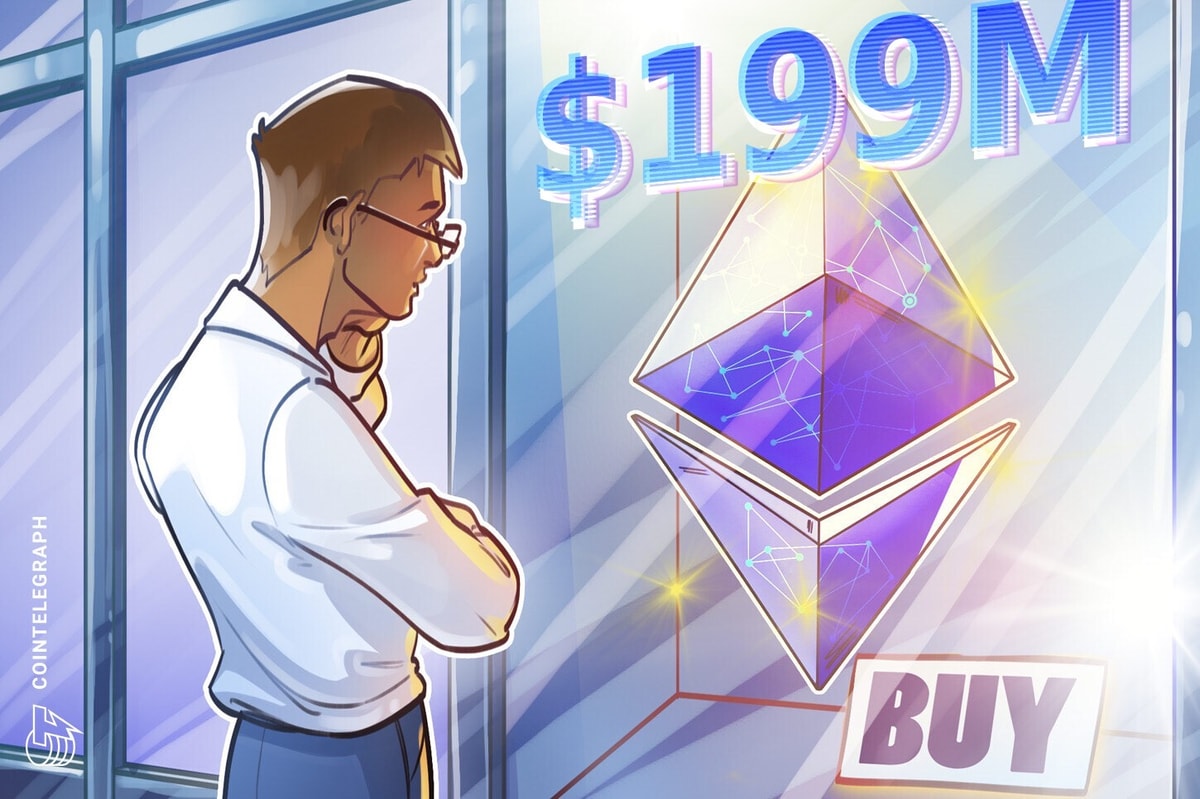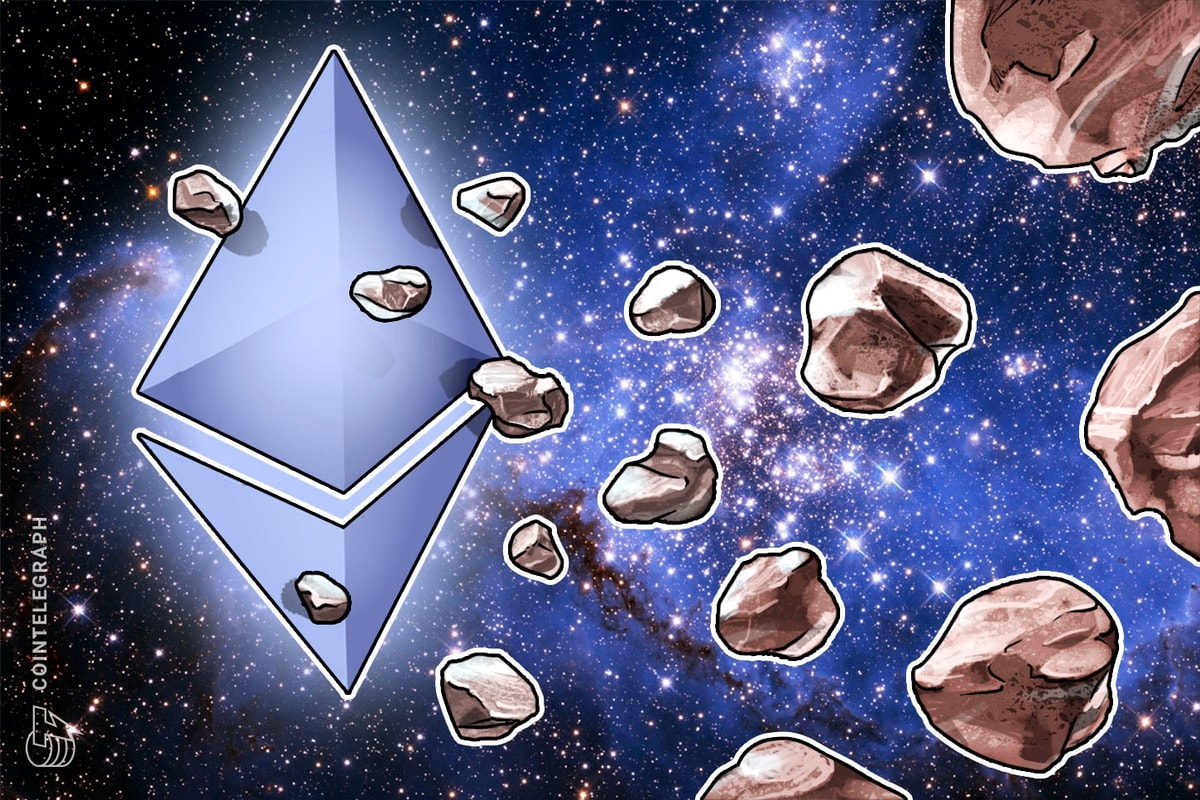Decentralized finance (DeFi) has massive potential to transform traditional financial services. Data from Emergen Research recently found that the global DeFi platform market size is expected to reach $507 billion by 2028. Moreover, the total value locked within DeFi currently exceeds $75 billion, demonstrating fast-paced growth compared to previous months this year.
Yet, DeFi’s potential may still not be realized by business leaders unfamiliar with the blockchain ecosystem. This notion is highlighted in Alex Tapscott’s recent book, Digital Asset Revolution. Tapscott, co-founder of the Blockchain Research Institute and managing director at Ninepoint Digital Asset Group, told Cointelegraph that he believes digital assets are going to be an important building block for a new internet, along with a financial industry that will change business models and markets. However, Tapscott noted that, to date, very few resources have been available to help enterprise leaders understand the relevance of digital assets. He said:
“Words like nonfungible tokens, central bank digital currencies and stablecoins are alien to people who are not involved in the world of crypto and blockchain. It’s our goal at the Blockchain Research Institute to illuminate the potential behind different digital assets, explaining what these are and why people should care about them in language that is easy to understand.”
How DeFi relates to the financial industry
In order to help readers understand the concepts behind DeFi, the first chapter of Digital Asset Revolution gives a broad overview of how decentralized finance could reinvent financial services. Tapscott begins by briefly summarizing how DeFi relates to nine specific functions of the finance industry: storing value, moving value, lending value, funding and investing, exchanging value, insuring value and managing risk, analyzing value, accounting for and auditing value and authenticating identity.
For example, in regard to storing value, Tapscott mentions that individuals and institutions can use noncustodial wallets like MakerDAO to act as their own banks. In terms of funding and investing, Tapscott notes that aggregators such as Yearn.finance and Rariable could potentially disintermediate investment advisers and robo advisers. Given these different use cases, Tapscott points out that the lines between traditional finance and DeFi will eventually blur as adoption rates grow. Yet, this most likely will not be the case in the immediate future, as skepticism around DeFi still remains.
Chapter one also addresses how a new ecosystem of digital assets is emerging from the growth of DeFi. This is an important aspect of the book, as co-author Don Tapscott told Cointelegraph that business leaders are still very much confused about what crypto represents. In order to clarify this, Digital Asset Revolution describes nine different digital asset classes, focusing on cryptocurrencies, protocol tokens, governance tokens, nonfungible tokens (NFTs), exchange tokens, securities tokens, stablecoins, natural asset tokens and central bank digital currencies (CBDC).
Cover of Digital Asset Revolution. Source: Blockchain Research Institute
While each of these assets is important, readers may be inclined to focus on the digital assets that are gaining momentum today. For example, the book features an entire chapter on stablecoins, demonstrating how these hold the potential to transform legacy payment infrastructures like SWIFT.
Recent: Crypto payments gain ground thanks to centralized payment processors
This does appear to be the case with some stablecoins, like Circle’s USD Coin (USDC). USDC was recently adopted by Banking Circle, a European bank focused on cross-border payments. But, some stablecoins are proving to be controversial. This was displayed following the collapse of the algorithmic stablecoin TerraUSD Classic (USTC) or Luna Classic (LUNC). As such, readers of Digital Asset Revolution should still conduct their own research when looking into different digital asset use cases, especially since the sector is constantly evolving.
CBDCs are another interesting topic mentioned throughout the book. Chapter four is dedicated entirely to CBDCs and features an edited transcript from a webinar hosted by the Blockchain Research Institute with J. Christopher Giancarlo, former chair of the United States Commodity Futures Trading Commission and co-founder of the Digital Dollar Project.
In this chapter, Giancarlo explains what a “digital dollar” represents, noting that the concept is very different from stablecoins, which are often tied to another asset of value. Giancarlo remarks that a digital dollar, also known as a CBDC, is a thing of value itself. While a number of concerns remain around CBDCs, Giancarlo also details why privacy is important in order for a digital dollar to be successful:
“At the Digital Dollar Project, we believe that developing the jurisprudence around the U.S. government’s approach to commercial activity using the sovereign currency, if it’s done right, could be a feature of a digital dollar that could be superior to other global reserve currencies.”
The chapter on NFTs may also pique readers’ interest, given the hype surrounding these digital assets. Alan Majer, founder of Good Robot — a company exploring artificial intelligence, robotics, blockchain and the metaverse — contributed to the chapter on NFTs, noting that “NFTs breathe life into digital notions of ownership.”
Given this, the author points out that enterprise leaders must start thinking creatively about tangible and intangible property rights. For example, Majer includes a chart here that displays NFT use cases, one being for intellectual property. The chart states that “NFTs could potentially confer licenses or titles not just of copyrighted works but also trademarks and patents as with 3D printing design files.” Another interesting use case displayed relates directly to DeFi, as NFTs have the potential to expand the range of assets to securitize, customize and derive additional value.
Digital assets aside, interoperability is discussed throughout chapter two of the book. According to Tapscott, interoperability is important for enterprise leaders to understand because this essentially allows different blockchain networks to communicate with one another.
“Smart contract platforms must interoperate seamlessly for DeFi and other new blockchain use cases to reach their full potential,” he writes. Tapscott then points out that smart contracting platforms like Cosmos and Polkadot were developed to address this issue. Anthony Williams, co-founder and president of the Digital Entrepreneurship and Economic Performance Center, elaborates on this throughout the second chapter, explaining how Cosmos and Polkadot allow blockchain networks to transfer value in a trustless and efficient manner.
Challenges of DeFi adoption
While Digital Asset Revolution provides an in-depth overview of how different digital assets associated with DeFi can impact traditional finance, Tapscott is also aware of the challenges associated with adoption. The author mentions these dilemmas at the end of chapter one, noting that DeFi is still in its early days and requires growth.
For instance, he explains that blockchain networks powering DeFi applications still require a lot of energy. While a number of DeFi applications are built on Ethereum, statistics show that Ethereum’s annualized footprint in electricity consumption grew during 2021, exceeding the consumption of countries like Colombia or Czechia.
Tapscott also notes that governments may regulate DeFi, which could hamper growth. Additionally, Don Tapscott mentioned that DeFi may become bigger than the billion-dollar fintech sector, but this would require senior executives and intermediaries like banks to understand the value of decentralized finance. “The challenge of course is that leaders of the old middle are typically last to embrace the new middle,” he said.
Recent: Blockchain-based solutions aim to address US disaster relief
All things considered, though, Tapscott ends his overview in chapter one, suggesting that organizations that fail to implement DeFi aspects will be engulfed by “this hot new industry.” Tapscott added that releasing a book on DeFi during a bear market demonstrates a valuable lesson. He said:
“We are in crypto winter, which is actually the best time to drill down on ideas and get educated. Bull markets are for earning while bear markets are for learning.”
The views and opinions expressed here are solely those of the author and do not necessarily reflect the views of Cointelegraph.com.






